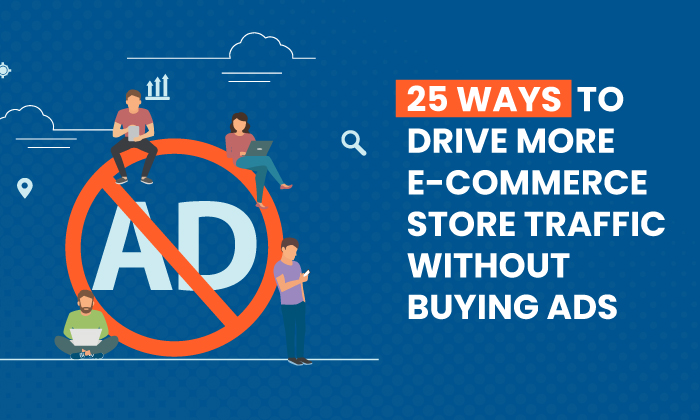Steps for Scaling Your eCommerce Business
eCommerce is a volatile industry. The survival of specific sites and the demise of others often appear utterly random. However, in practice, the websites that are most likely to thrive are those that make preparations and take action to...

eCommerce is a volatile industry. The survival of specific sites and the demise of others often appear utterly random. However, in practice, the websites that are most likely to thrive are those that make preparations and take action to keep up with the expansion of their businesses.
To prepare your eCommerce company for scaling, you must make the necessary effort. Being ready for several changes is a part of this. Furthermore, you cannot approach it randomly and without any preparation. If scaling initiatives are well carried out, your firm may succeed.
To guarantee that you have a solid foundation to establish your eCommerce store, consider the following advice to implement early on:
Set goals for 1, 3, 5, and 10 years. You may use defined plans set at regular intervals as a guide to help you decide what is best for your company.Establish your Key Performance Indicators (KPIs), so you can monitor your company’s development monthly and assess the effectiveness of various growth plans.The business plan is essential for launching any new company, since it anticipates challenges you’ll face in the future and holds you accountable.Make a cash flow spreadsheet and run the figures to determine your expected income, monthly fixed expenses, inventory costs, and other factors.Establish your brand and determine your target market. Strong brand identification will help you decide where to expand and how to implement a digital marketing plan in the future.Reliable eCommerce website development. Your website will generate revenue, but it also serves as a tool for generating visitors. For any outbound marketing, you’ll also need to create sales pages, landing pages, and content to aid with search engine traffic (inbound marketing).Analyse and Improve the Client Experience
Your website is the foundation for your online business, but if no one visits it, you will never generate any revenue. Building your online profile, increasing site traffic, and turning browsers into paying customers all depend on a potent digital marketing effort. To get started, consider these straightforward techniques for web marketing:
Perform a keyword search. You must research to determine the most effective keywords before you begin marketing to reach your target market.Make an automated email marketing campaign. Email offers eCommerce firms the best return on investment and is also among the simplest methods to engage with clients.Personalise it. Make shopping at your online store feel personal, and customers are more likely to convert. This may be done in various ways, from the basic to the sophisticated, such as adding a “click to chat” bubble to the site or reminding users by email when they leave anything in their shopping cart.Make a loyalty program a reality. It can cost five to twenty-five times more to get a new client than to keep a current one, depending on your sector. Consider introducing a loyalty program to keep your consumers interested and give them the incentive to do business with you again.Make your website mobile-friendly. Mobile internet traffic has surpassed desktop internet traffic won’t surprise you. What is remarkable, though, is how frequently the search results for identical queries on mobile and desktop are different. It all depends on whether your website is optimised for mobile. Make sure your website is mobile-friendly to gain the upper hand for your eCommerce shop in the search results (phones, tablets, etc.).Produce content to establish authority. Establishing your company as an authority in the field is one of the finest strategies to earn clients’ confidence. By providing excellent, educational, and pertinent content on your website, you may gain your visitors’ confidence. Additionally, employ images and videos rather than just textual materials.Make a connection with your target market. Establishing a more personal relationship with your target audience is what gives digital marketing its strength. Social media achieves this better than any other marketing strategy. You can connect, interact, and develop your business more personally through social media platforms like Facebook, Instagram, and Twitter. It would be best if you devoted time and effort to growing your social media strategy, whether your goal is merely to gain a following on these platforms or to use their ad platforms to reach your target audience.Digital marketing is not a one-and-done approach when it comes to eCommerce; if you want your company to expand, you’ll need to keep up the effort. It’s okay to start off modest, but as your company expands, you should also increase your marketing plan.
Never Be Frightened to Make Business Changes
You need to leverage all the information you now have about your customers’ journeys to you, their opinions of your website, and their reactions to your products to enhance their experience with you.
Did a lot of clients find you on a specific website? Use that data to help you create your upcoming marketing campaign.
Did someone complain about your website? Determine the issue, then employ a web developer to address it. Customers will only linger around your website if it is clumsy or challenging to use, given the abundance of online retailers to select from.
Do you have negative product reviews? Contact those clients directly to see if you can assist them or enhance your product so that problems only arise occasionally.
Refresh Your Site to Improve SEO
You must be findable if you want to attract more clients. You should spend money on search engine optimisation to make it happen (SEO).
Experts often provide the following advice:
Determine the relevant keywords that customers will use and implement them on your website.Ensure that your website loads quickly.Use unique content only on your website and from reliable sources.Adapt your website to current technological trends or search engine algorithmsIf you’re a business owner who isn’t very tech-savvy, think about hiring a consultant for this phase. It can significantly impact website traffic and clicks.
Adapt to Smartphone Shopping
If you haven’t changed your theme, your store might not be mobile-friendly. You must make adjustments to your shop theme with eCommerce website development in order to keep it updated.
Mobile-friendly websites need to include the following features:
Quick loadingConvenient navigationAdapted forms for customers to fill outAccessibility to the desktop versionEncourage visitors to become purchasersAlways keep in mind the proportion of clients that make purchases on their mobile devices, and place the highest premium on mobile optimisation. This will enhance conversions for your online store so that you can be sure of that.
Develop Excellent Customer Service
The quality of your goods is crucial to establishing a prosperous eCommerce business. Customer happiness, however, is much more vital. Word-of-mouth advertising is invaluable regarding the scalability of an eCommerce business. The online purchase cycle is the key to understanding this. The buying cycle appears as follows:
The cycle is frequently longer since eCommerce items are not tangible like those in physical retail establishments. Because consumers cannot physically view the thing in question and have so many options, they take longer to decide what to buy. You can overcome both challenges by providing your consumers with the best possible customer service.
Consider Zappos as an example, the largest online shoe retailer in the world. They persuaded customers to purchase shoes online in 1999, before eCommerce became mainstream. How? Through providing outstanding customer service. Zappos encourages its customer service representatives to engage with every client. Their most prolonged customer service contact was a massive 10 hours and 51 minutes long, to put this in context.
Key Takeaways of Best Practices in Scaling Your eCommerce Business
Here are five ways how to scale your eCommerce business:
Develop your marketing plan. Your company will expand over time, and expansion brings change. When you reach certain milestones, you should examine your present customers more closely and ensure your marketing plan is tailored specifically to reach them.Improve your approach to order fulfillment. Whether using a 3PL or fulfilling orders internally, be sure that your order fulfillment approach is efficient and cost-effective. If you have a 3PL partner, schedule time with them once a year to discuss your growth and how they might assist.Take into account expanding into a new market. If you already have a 3PL relationship, entering new markets may be effortless.Invest in new technologies and eCommerce website development. As your business expands, this can result in hundreds or even thousands of additional SKUs. At some times, your original e-commerce platform might not be sufficient. Whether switching from SquareSpace to Magento or just locating a new project management tool, invest in technology that helps automate your organisation.Watch out for your competitors. Filling a gap left unfilled by your competition is one of the finest methods to expand your business. Studying your rivals will help you identify their strengths and, more significantly, their weaknesses. Check their customer evaluations to find unmet demands and learn how to fill in the spaces they don’t.Consider carefully how to lay a solid basis for your business’s early growth and constantly keep striving to preserve that momentum. Good luck!

 Kass
Kass 





























